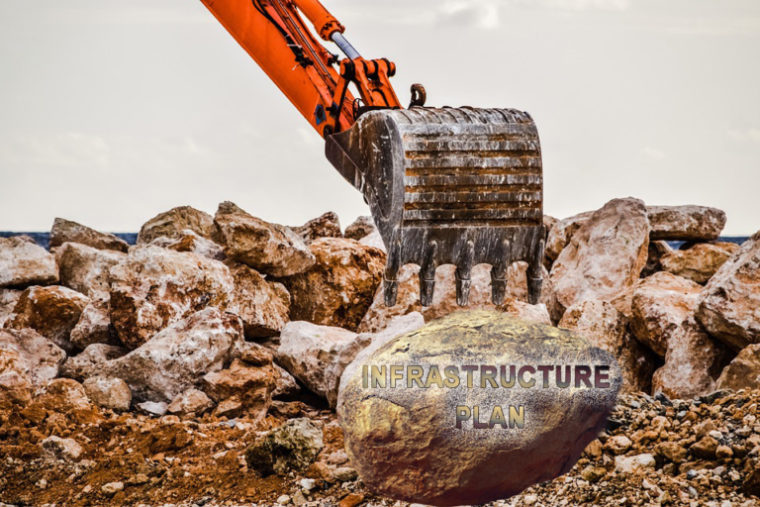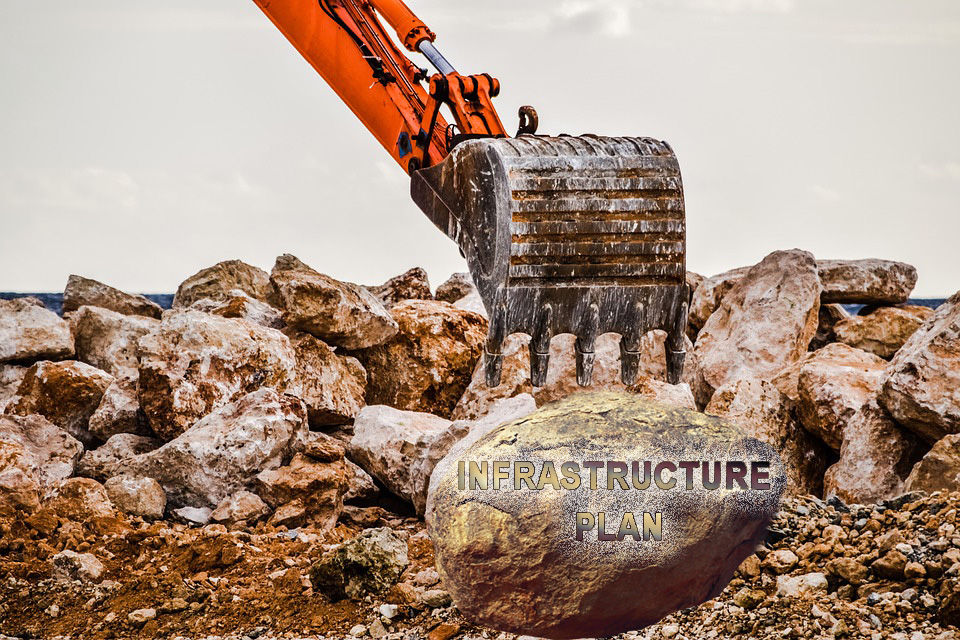
The nation’s long-awaited Infrastructure Plan will be addressed during next week’s State of the Union address, according to President Trump, who also says the plan that originally was expected to result in a $1 trillion nationwide infrastructure investment has now grown to an investment forecast of approximately $1.7 trillion.
This comes on the heels of a document being leaked this week that is purported to be a draft outline of the administration’s plan. But like a previous document of “principles” released last summer, the new draft – which is only six pages – is not long on specifics.
In June, the President announced a proposal that relied heavily on private capital and public-private partnerships to rebuild America’s infrastructure. Trump said to reach the $1 trillion figure, the federal government would invest $200 billion that was expected to leverage the remaining $800 billion in state and local government funds and private capital.
Government officials with infrastructure needs are applauding the goals of the plan, of course. They have huge needs and they are counting on help from the federal government. But, where the funding will come from and how it will be allocated remains a mystery.
The leaked document this week focuses on how federal funding will be spent. It also addresses issues goals – such as encouraging more private investments on public projects through Private Activity Bond (PAB) expansion, eliminating federal restrictions on interstate tolling and expanding federal grant programs. And private capital is expected to be a major funding source.
 The document notes that 50 percent of the federal funding will be earmarked for the administration’s Infrastructure Incentives Initiative. Among the entities eligible for applying for funding grants will be states, groups of states, metropolitan planning organizations, nonprofits, public utilities and private companies with sponsorship by a public entity. Applications for funding will be accepted every six months. The document notes that federal grants cannot exceed 20 percent of the cost of the project and no single state can be awarded more than 10 percent of the amount available for allocation.
The document notes that 50 percent of the federal funding will be earmarked for the administration’s Infrastructure Incentives Initiative. Among the entities eligible for applying for funding grants will be states, groups of states, metropolitan planning organizations, nonprofits, public utilities and private companies with sponsorship by a public entity. Applications for funding will be accepted every six months. The document notes that federal grants cannot exceed 20 percent of the cost of the project and no single state can be awarded more than 10 percent of the amount available for allocation.
Stakeholders will want to know that among the criteria for securing these grants is being able to show how new non-federal funding will be secured and committed to sustainable, long-term funding as well as plans that outline operation, maintenance and rehabilitation of projects.
The remaining 50 percent of the total appropriation includes:
- 10 percent for “transformative” and ground-breaking projects awarded on a competitive basis for funding and technical assistance for projects unable to secure funding through the private sector because of the uniqueness of the program;
- 25 percent set aside for a Rural Infrastructure Program, with incentives for states to partner with local and private investors on projects related to broadband, transportation, water and waste, water resources, power and electric;
- 7.05 percent for Federal Credit Programs to increase the capacity of existing lending programs; and
- 5 percent to the Federal Capital Financing Fund to establish a revolving fund available to agencies to help pay for high-dollar property purchases.
The plan includes other provisions such as allowing states to commercialize interstate rest stops, eliminating restrictions on using public-private and public-public partnerships on transit projects, offering numerous actions to help provide state-of-the-art facilities for veterans, reducing barriers to alternative project delivery for airports and expanding the Water Infrastructure Finance and Innovation Act (WIFIA) to include flood mitigation, navigation and water supply.
A final infrastructure plan draft, rumored to be about 70 pages, could be released before the month ends. Trump’s public-private partnership guru and policy advisor, D.J. Gribbin, has indicated that in addition to expanding the six-page draft, the final plan will likely include the simplification of the onerous federal funding application process.
